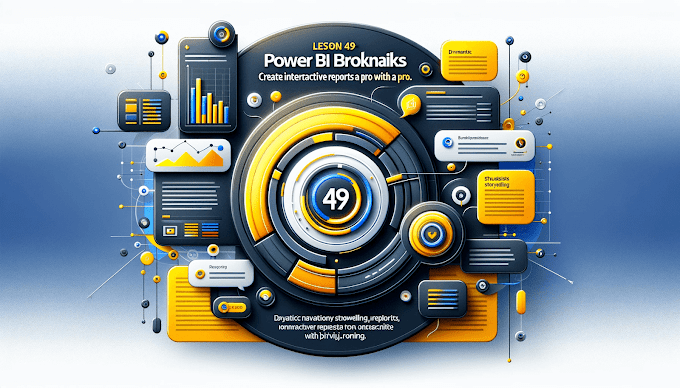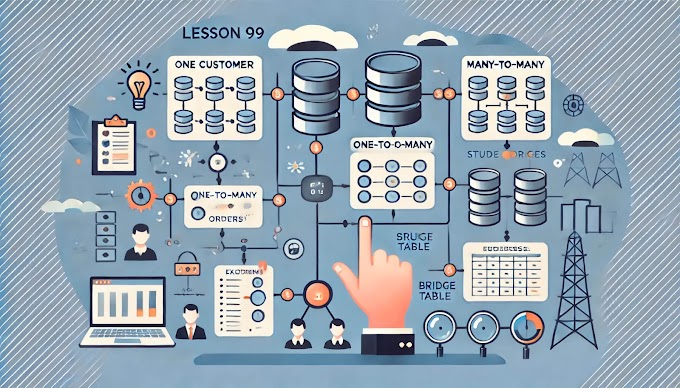Welcome back to Virvijay.com, where we simplify Power BI for you! 🚀
In this blog, we'll explore Row-Level Security (RLS)—an essential feature for controlling data access in Power BI.
📌 Why RLS?
- Ensures users see only relevant data based on their roles.
- Prevents unauthorized access to sensitive business information.
- Improves report performance by reducing unnecessary data load.
✅ By the end, you'll know how to implement RLS in Power BI step by step!
1️⃣ What is Row-Level Security (RLS)?
Row-Level Security (RLS) restricts data access at the row level based on user roles. This means different users see different data based on assigned filters.
🔹 Example Scenario:
- A sales manager sees sales data for the entire company.
- A regional manager sees only data for their region.
- A sales rep sees only their own sales data.
Instead of creating separate reports for each user, RLS allows you to manage everything in one report!
2️⃣ Types of Row-Level Security (RLS) in Power BI
Power BI offers two types of RLS:
✅ 1. Static Row-Level Security (Predefined Filters)
- Users are assigned to fixed roles with predefined filters.
- Example: Only users in the "North Region" role can see North region data.
✅ 2. Dynamic Row-Level Security (User-Based Access)
- Access is determined dynamically based on the logged-in user.
- Example: A sales rep only sees their own sales data.
- Uses USERPRINCIPALNAME() or LOOKUPVALUE() to filter data based on login credentials.
Dynamic RLS is more flexible and scalable, so we’ll focus on implementing that! 🚀
3️⃣ Step-by-Step Guide to Implement Row-Level Security (RLS) in Power BI
Let’s implement Dynamic RLS with an example dataset:
📝 Scenario:
You have a Sales Table with columns:
📌 SalesID, EmployeeName, Region, SalesAmount
You want each sales rep to see only their own sales, and managers to see their region's data.
🔹 Step 1: Create a User Table
Create a User Table that maps users to roles:
🔹 Why is this needed?
- This table acts as a security mapping table for assigning data access.
- The UserEmail column will be matched to the logged-in user's email.
🔹 Step 2: Define a Role in Power BI
- 1️⃣ Open Power BI Desktop.
- 2️⃣ Go to Modeling → Manage Roles.
- 3️⃣ Click Create New Role and enter a name (e.g., SalesRepAccess).
- 4️⃣ Apply the following DAX filter to the Sales Table:
DAX
Sales[EmployeeName] = LOOKUPVALUE(Users[EmployeeName], Users[UserEmail], USERPRINCIPALNAME())
📌 Explanation:
USERPRINCIPALNAME() gets the current logged-in user’s email.
LOOKUPVALUE() finds the corresponding EmployeeName from the User Table.
The Sales table is filtered to show only the sales related to the logged-in user.
🔹 Step 3: Implement RLS for Managers
To allow managers to see their entire region’s data, modify the filter like this:
DAX
Sales[Region] = LOOKUPVALUE(Users[Region], Users[UserEmail], USERPRINCIPALNAME())
📌 How this works:
- A manager’s email is matched to the User Table.
- The filter ensures the manager sees all sales in their assigned region.
🔹 Step 4: Test the Role in Power BI
- 1️⃣ Go to Modeling → View As Roles.
- 2️⃣ Select a role (e.g., SalesRepAccess).
- 3️⃣ Enter a test email (e.g., support@virvijay.com).
- 4️⃣ Verify that only John’s sales appear in the report.
If everything works correctly, your Row-Level Security (RLS) setup is done! 🎉
4️⃣ How to Publish & Apply RLS in Power BI Service
Once RLS is set up in Power BI Desktop, follow these steps to apply it:
- 1️⃣ Publish the report to Power BI Service.
- 2️⃣ Go to Power BI Service → Workspace → Dataset Settings.
- 3️⃣ Under Security, select the role (e.g., SalesRepAccess).
- 4️⃣ Assign users (e.g., add john@company.com to the role).
- 5️⃣ Test the report by logging in with a user account.
📌 Important Notes:
- RLS only works in Power BI Service (not Power BI Desktop).
- Users must be assigned to a security role in the Power BI workspace.
- You can assign users individually or via Azure Active Directory groups.
5️⃣ Key Benefits of Row-Level Security (RLS)
- ✅ Secure & Restricted Access – Users only see their own data.
- ✅ One Report for All Users – No need to create multiple versions.
- ✅ Better Performance – Less data load, faster reports.
- ✅ Easy Management – Dynamic filters adjust automatically.
6️⃣ Common Mistakes to Avoid in RLS
- ⚠️ Not using a User Table – Always map users to their roles.
- ⚠️ Hardcoding emails in DAX – Always use USERPRINCIPALNAME() for flexibility.
- ⚠️ Not testing before publishing – Always use View As Roles to verify filters.
- ⚠️ Applying RLS to the wrong table – Always filter fact tables (e.g., Sales).
7️⃣ What’s Next?
Now that you know how to restrict access using RLS, let’s explore Power BI Paginated Reports (for Pixel-Perfect Reporting) in our next blog!
📌 In the next blog, you’ll learn:
- ✅ What are Power BI Paginated Reports?
- ✅ How to create a Paginated Report step by step
- ✅ When to use Paginated Reports vs. Power BI Reports
Stay tuned to Virvijay.com for more Power BI insights! 🚀
💡 Did you find this blog helpful? Share it with your team and start securing your Power BI reports today!
Write Us @ [support@virvijay.com]















%20Best%20Practices%20%E2%80%93%202025%20Guide'%20illustrating%20secure%20and%20controlled%20data%20acce.jpg)
